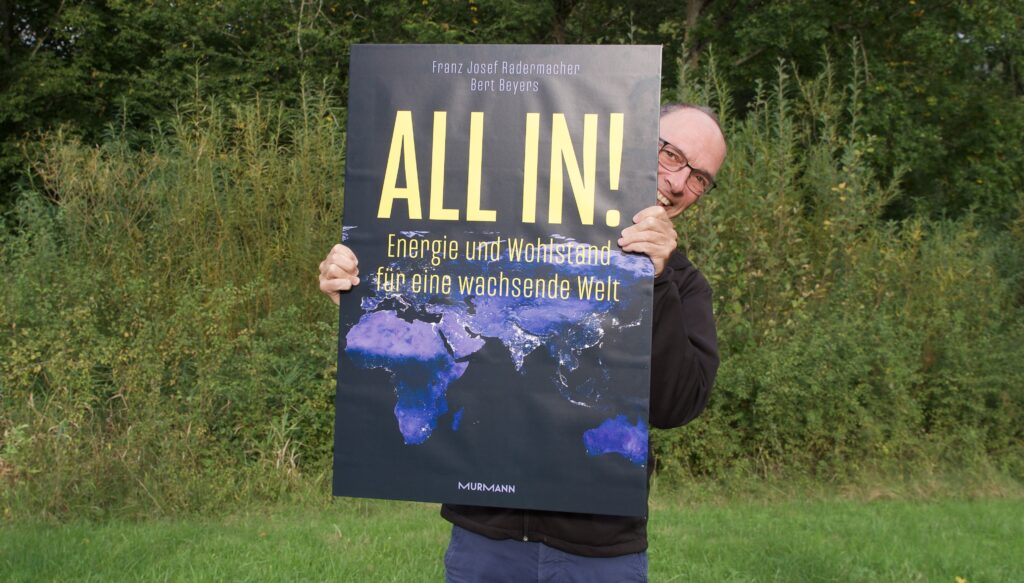At this point, some news of the last few weeks will be addressed which, from GES’ point of view, are reason for hope because they contain building blocks of a possible global solution and / or could help to develop a realistic view of the challenges ahead of us.
After the Russian attack on Ukraine, European states want to become less dependent on energy imports. An EU oil embargo is on the way. And the German government has approved almost three billion euros for floating LNG terminals. Possible locations are the ports of Wilhelmshaven, Brunsbüttel, Stade, Rostock and Hamburg. According to German Economics Minister Robert Habeck, two floating LNG terminals are to go into operation this year.
Meanwhile, Italy, which is about as dependent on Russian gas imports as Germany, is increasingly looking for new suppliers in Africa: namely in Algeria, Angola and Congo.
To break away from Russian gas, the EU plans to produce 10 million tons of hydrogen annually on its own, plus another 10 million hydrogen imported – by 2030. Achieving this goal will require a major effort. Proposals can be found in the discussion paper How to deliver on the EU Hydrogen Accelerator. It was published by HydrogenEurope, with Dii Desert Energy among others involved.
Negotiations on the Renewable Energy Directive (RED III) are currently taking place in Brussels. This also involves the certification of hydrogen. MEP Markus Pieper (EPP) argues – contrary to the Commission’s guidelines – not only for green hydrogen, but also for blue and turquoise hydrogen. Pieper’s argument: if we were to rely exclusively on green hydrogen, “we would never get the hydrogen ramp-up (…) because there is a foreseeable lack of wind and solar plants and the necessary space in the short term”. Interview in: Tagesspiegel Background from 25.04.2022
The costs of renewables continue to fall. According to an IPCC report, costs for wind energy fell by 55 percent between 2010 and 2019 and those for lithium-ion batteries by 85 percent. Hydrogen reconversion will reach 50 per cent efficiency by 2030.
“Renewable and alternative fuels are essential for climate protection in the mobility sector and serve energy security.” So says an open letter signed by 175 scientists. The letter is addressed to the European Commission on the occasion of the processing of the Fit-for-55-package.
Projekt H2ercules. RWE and OGE have announced investments in the order of 3.5 billion euros for the hydrogen infrastructure in Germany. This includes electrolysis capacities of 1 GW and 1,500 kilometres of pipelines.
The American oil and gas producer Occidental Petroleum has announced that it will invest up to one billion US dollars in a direct air capture plant. The CO2 filtered from the air is to be stored in the ground. According to the oil and gas producer, Airbus has been won as a customer. The aircraft manufacturer wants to improve its CO2 balance by buying certificates.
The Norwegian company Nel wants to build the world’s first fully automated production plant for electrolysers. By scaling up production, Nel intends to supply green hydrogen at a price of 1.5 US dollars per kilogram – cheaper than conventionally produced hydrogen.
When will global demand for oil peak? According to a report by the consulting firm McKinsey, this is already expected to happen in the next five years. The demand for coal has already passed this peak, namely in 2013. Gas, on the other hand, is expected to be produced even more in the coming years.
And this. “My proposal is to capture CO2 directly at the coal-fired power plant,” said Franz Josef Radermacher, vice-chairman of GES, in an interview with Entsorga magazine. “But the German way of thinking forbids this. Critics fear a lock-in effect in favour of coal, which could thus appear cleaner. If German KfW funds are used, then you want to get CO2 directly out of the atmosphere using direct air capture technology – even if that is ten times as expensive.”




